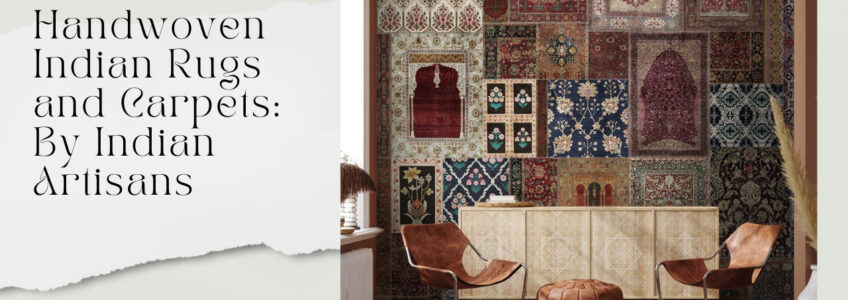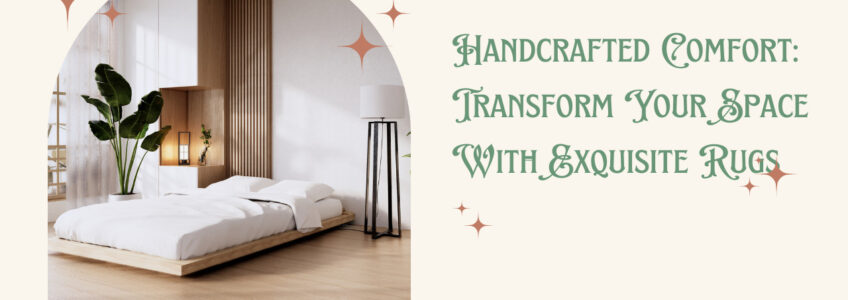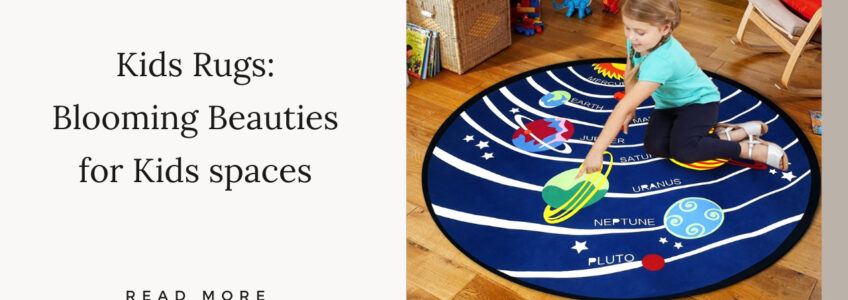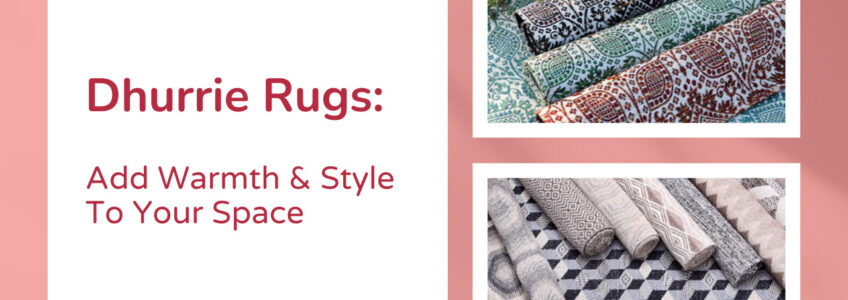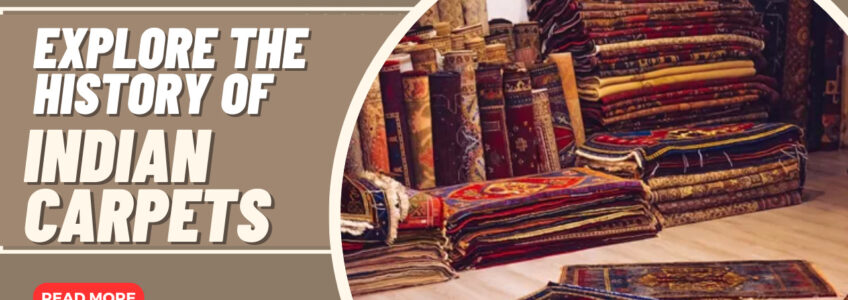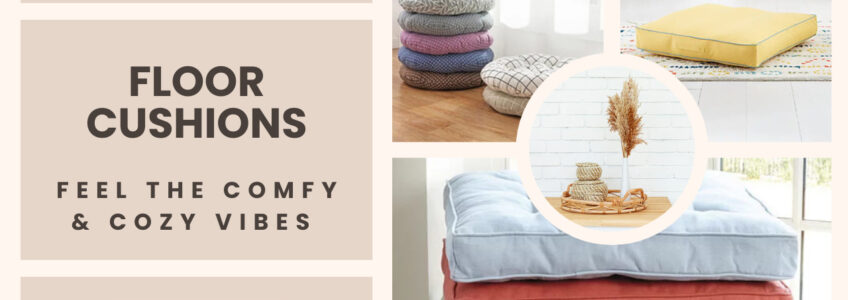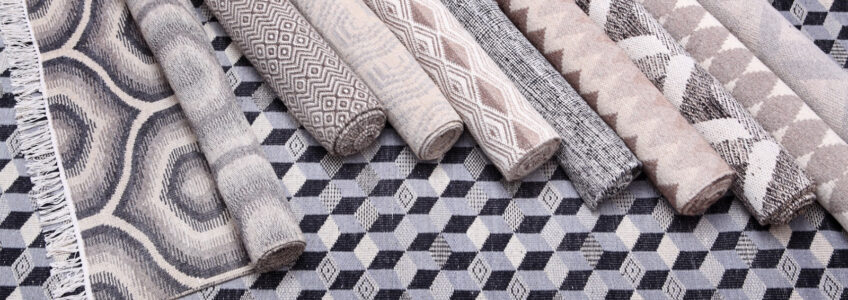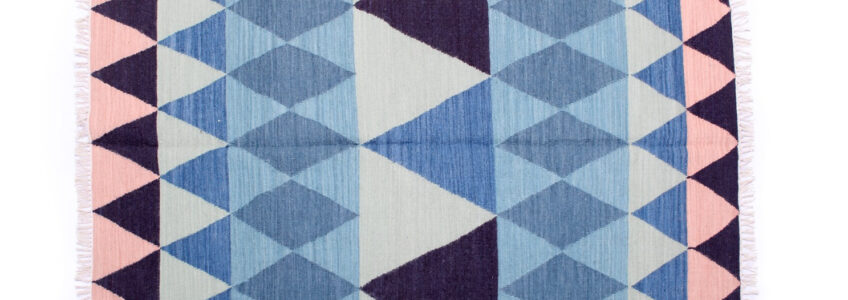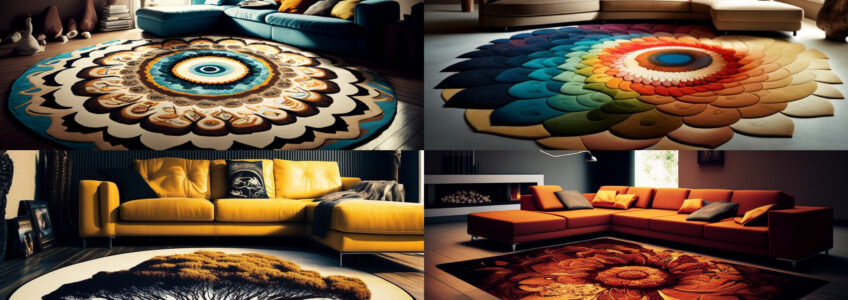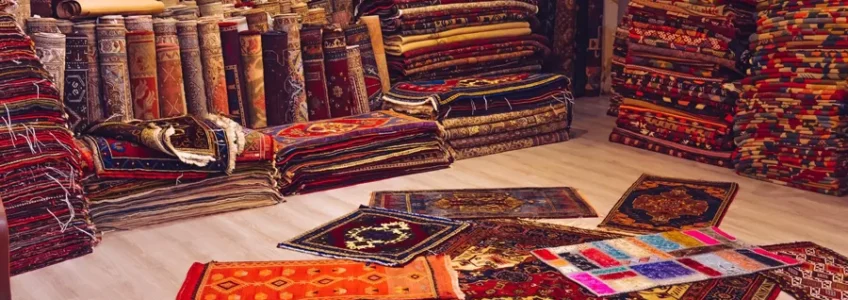India has a rich history when it comes to carpets and rugs, with a tradition that dates back centuries. The art of carpet weaving in India has been influenced by various cultural, religious, and historical factors. Artisans play a crucial role in the creation of carpets and rugs in India. These skilled craftsmen contribute to the country’s cultural and artistic heritage. Handwoven rugs and carpets not only add up to the beauty of your living space but they also narrate a story with every thread that is woven by the hard-working artisan. Rugs and carpets differ from one another to some extent. Let’s explore the differences between them.
Indian Rugs
Rugs are typically utilised to cover particular portions of a room because of their smaller size. They can be utilised as ornamental items or tucked under furniture. Rugs can have complex patterns and designs, but in a smaller area, the detail may be more focused. Rugs are adaptable and simple to relocate into different areas. They can be put in living rooms, bedrooms, or entryways and are frequently utilised for decorative purposes. In India, hand-knotted rugs are a regular sight, with expert artisans carefully tying each knot by hand. High levels of craftsmanship and complex designs are possible with this technology. Indian carpets can be made from a variety of materials, such as silk, wool, or both together.
Indian Carpets
On the other hand, carpets typically cover a room’s whole floor and cover a greater area. Because of their bigger size, carpets may accommodate larger, more intricate designs, frequently covering the full surface in a repeating pattern. Carpets are more permanent features in a room and are usually put wall to wall. In addition to being ornamental, they also have functional uses including sound absorption and insulation. Carpets can be woven using a variety of methods, but they frequently use larger looms and can be machine- or hand-knotted. India offers a wide range of materials from which to choose for carpets; these include the intended usage, affordability, and personal taste in design.
The Craftsmanship of Indian Artisans
The history of rug weaving and carpet manufacturing dates several years back in India and here the artisans are quite experienced and skilled. Indian rugs and carpets are renowned worldwide for their craftsmanship, intricate designs, and quality. The creation of these textile masterpieces involves skilled artisans who have inherited their craft through generations.
Hand-Knotting Techniques: Hand-knotting is a skill that is passed down from generation to generation and is used in the creation of many Indian rugs and carpets. Each knot is skillfully tied by artisans, which adds to the rug’s beautiful designs and long lifespan.
Traditional Designs: Indian rugs frequently have classic designs including geometric forms, florals, vines, and animals. In addition, religious and cultural elements may have served as inspiration for the patterns, which highlight India’s rich past.
Craft Villages: Indian rug and carpet manufacture is primarily focused in certain areas, or “craft villages,” where whole communities are devoted to the art form. Every region could have its distinct methods and styles.
Training Future Generations: Many families are committed to preserving their heritage by passing down the skills and techniques of rug and carpet making to younger generations. This ensures the continuation of traditional craftsmanship.
Adaptation to Contemporary Styles: While preserving traditional techniques, Indian artisans also adapt to modern tastes and design trends. This flexibility keeps the craft relevant in today’s global market.
Conclusion
Well, now we know the difference between a rug and a carpet. India is quite famous for its hand-knotted rugs and Indian wool rugs also hold a special demand worldwide. If you are looking for handwoven rugs in India, then Shree Sai International manufactures a wide range of carpets and rugs. All their rugs are handmade by the skilled artisans of India, they are one of the leading exporters in India with a vast clientele base all over the world. They are well-known for the rug’s quality and traditional designs with a modern touch. Shree Sai International is a brand that is preserving the rich culture and tradition of handmade rugs and carpets.
FAQS
What distinguishes handwoven rugs and carpets from machine-made alternatives?
Handwoven rugs and carpets are crafted manually by skilled artisans, each piece a unique creation. This process involves meticulous attention to detail, precision, and a level of craftsmanship that sets them apart from mass-produced machine-made counterparts.
What materials are commonly used in handwoven rugs and carpets in India?
Skilled artisans in India commonly use materials like wool, silk, or a blend of both for crafting handwoven rugs and carpets. The choice of material can influence the texture, durability, and appearance of the final product.
Are handwoven rugs and carpets customizable to specific design preferences?
Yes, Shree Sai International in India offers customization options. Clients can work closely with artisans to choose designs, colors, and even sizes that align with their preferences and complement their living spaces.
How can we ensure the authenticity of handwoven rugs and carpets when importing from India?
Look for reputable suppliers with a history of craftsmanship and positive reviews. Request detailed information about the artisans, weaving techniques, and materials used.
Are customization options available for importing handwoven rugs to meet specific market preferences?
Shree Sai International offers customization. Discuss design, color, and size options with them to ensure the rugs align with the preferences of your target market.

